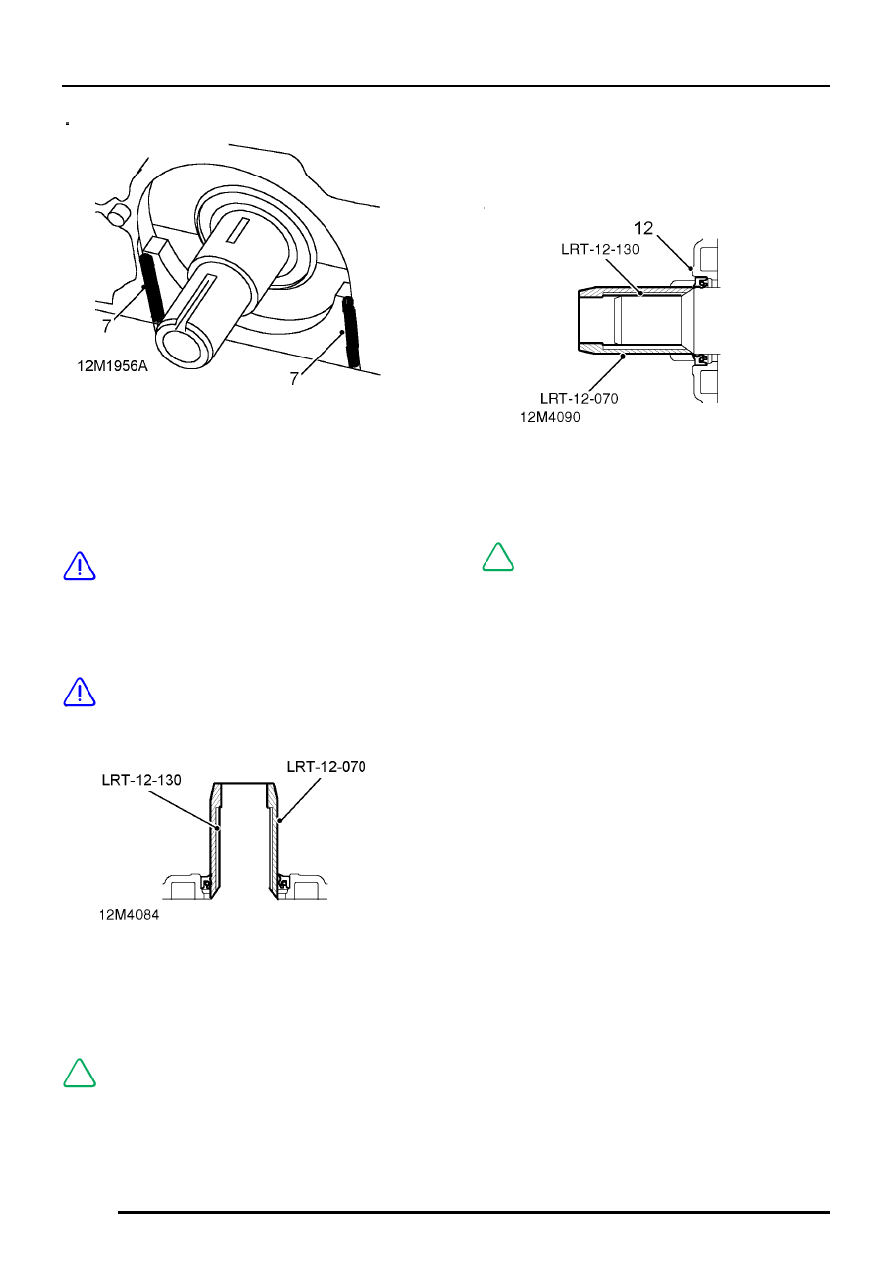Land Rover Engine 2.0 Litre L Series. Manual - part 12

ENGINE
38
OVERHAUL
7. Using sealant, Part No. GUG 705963GM,
apply a 1 mm thick bead of sealant to joint line
of front - Number 1 main bearing cap and
cylinder block.
CAUTION: Do not fill grooves on either
side of main bearing cap or apply sealant
to sump mating flange of main bearing
cap until immediately before sump is fitted.
8. Position a new gasket to cylinder block.
CAUTION: Gasket must be fitted dry.
9. Insert oil seal protector LRT-12-070 and
adaptor sleeve LRT-12-130 into oil pump inner
rotor.
NOTE: This will assist in locating oil pump
inner rotor on Woodruff key.
10. Align Woodruff key slots in oil pump inner rotor
with Woodruff key
11. Ensure bolt holes in cylinder block are clean
and dry.
12. Slide oil pump over crankshaft ensuring
Woodruff key is located in keyway in inner
rotor, locate oil pump on dowels.
NOTE: Tools LRT-12-070 and LRT-12-130
will be displaced as pump is fitted.